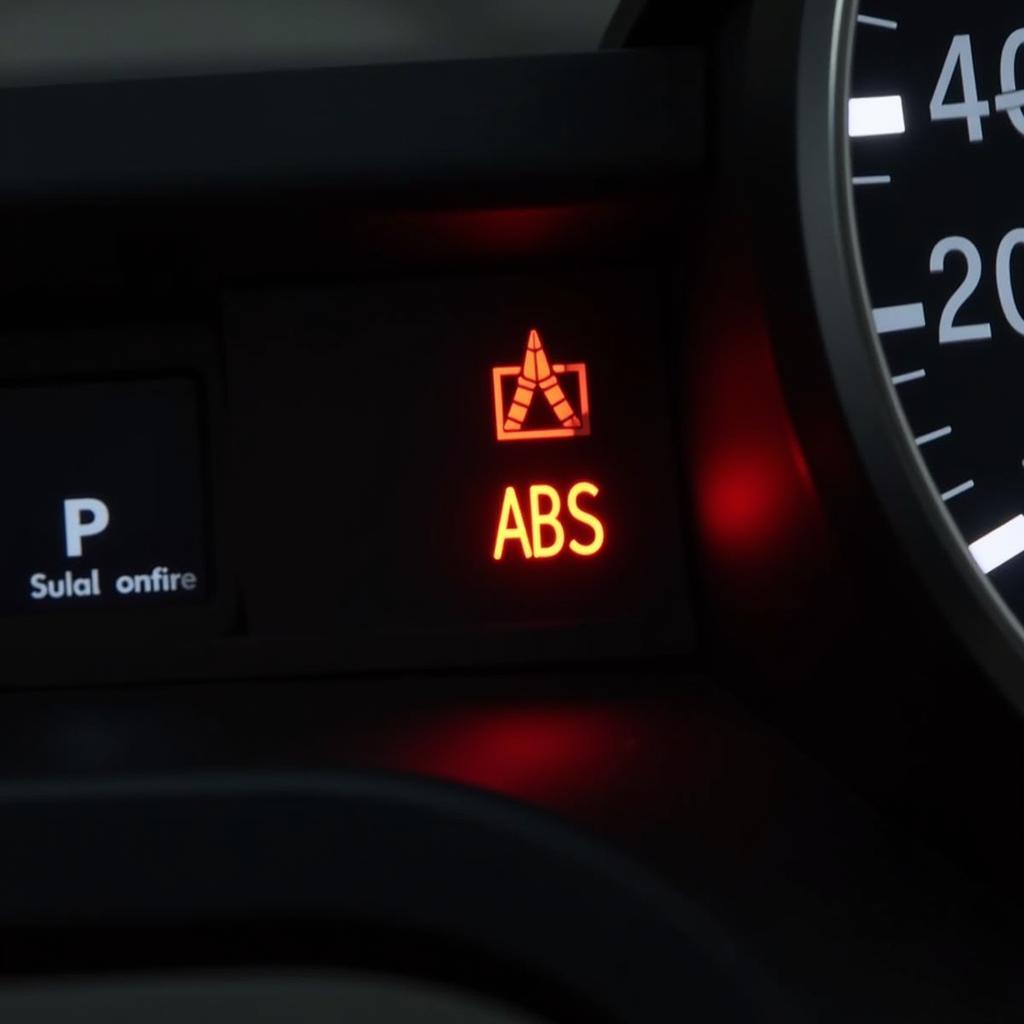Experiencing a glowing charge warning light and brake light on your dashboard simultaneously can be alarming. This dual warning usually indicates an underlying issue with your vehicle’s electrical charging system or battery. Understanding the potential causes and knowing how to troubleshoot them can save you time, money, and unnecessary stress.
Decoding the Warning Lights
Your car’s dashboard is like its communication center. The charge warning light, often depicted as a battery symbol, indicates a problem with the charging system. On the other hand, the brake light signifies an issue with your braking system or low brake fluid. When both illuminate simultaneously, it suggests a possible link between the two systems, usually pointing towards a failing alternator.
Common Causes of a Dual Warning Light
Several factors can trigger both the charge warning light and brake light to illuminate. Here are some of the most common culprits:
- Failing Alternator: The alternator is the powerhouse of your vehicle’s electrical system, responsible for charging the battery and powering electrical components while the engine is running. A failing alternator can lead to insufficient voltage, triggering both warning lights.
- Loose or Worn Alternator Belt: The alternator belt drives the alternator. If it’s loose, worn, or broken, the alternator won’t function correctly, leading to a drop in voltage and activating the warning lights.
- Weak or Dead Battery: While the alternator charges the battery, a weak or dead battery can put excessive strain on the alternator, leading to its premature failure and triggering both warning lights.
- Electrical Short: An electrical short in the charging or braking system can disrupt the electrical flow, causing voltage fluctuations and illuminating the warning lights.
- Faulty Brake Light Switch: In some cases, a faulty brake light switch can create a drain on the electrical system, especially when the brake pedal is engaged, leading to both warning lights turning on.
 Car Dashboard with Brake Light and Battery Light On
Car Dashboard with Brake Light and Battery Light On
Troubleshooting Steps
Before heading to a mechanic, here are a few troubleshooting steps you can try:
- Check Battery Terminals: Ensure the battery terminals are clean, tight, and free from corrosion. Loose or corroded terminals can hinder proper electrical flow.
- Inspect the Alternator Belt: Visually inspect the alternator belt for cracks, fraying, or looseness. If you notice any significant wear and tear, it’s best to replace the belt.
- Test the Battery: Use a multimeter to check the battery voltage. A fully charged battery should read around 12.6 volts. If the voltage is significantly lower, it indicates a weak or dead battery that may need replacement.
When to Seek Professional Help
If the troubleshooting steps don’t resolve the issue or you’re uncomfortable performing them yourself, it’s crucial to seek professional assistance. Driving with a malfunctioning charging system can lead to a complete electrical failure, leaving you stranded.
 Mechanic Inspecting Alternator Belt in a Car
Mechanic Inspecting Alternator Belt in a Car
“Ignoring warning lights on your dashboard is like ignoring a fever – it’s your car’s way of telling you something is wrong,” says John Smith, a certified automotive electrician with over 20 years of experience. “Addressing the issue early on can prevent further damage and costly repairs down the line.”
Remote Diagnostics and Software Solutions
In today’s technologically advanced world, remote diagnostics and software solutions play a vital role in resolving car issues. Many modern vehicles can be remotely diagnosed by certified technicians using specialized software. This allows them to identify the root cause of the problem, including issues related to the charging system or brake light, efficiently and accurately.
Remote software solutions can also be implemented in certain situations, such as resetting warning lights after a battery replacement or updating software related to the vehicle’s charging system. This offers a convenient and efficient alternative to traditional repair methods.
Preventive Maintenance is Key
Like any other component in your vehicle, the charging and braking systems require regular maintenance to function optimally. Here are some preventive measures:
- Regular Battery Inspection: Inspect your battery every six months for signs of damage, corrosion, or low electrolyte levels.
- Alternator Belt Replacement: It’s recommended to replace the alternator belt every 36,000 miles or as per your vehicle’s manufacturer recommendations.
- Timely Brake Fluid Flush: Brake fluid should be flushed and replaced every 24,000 miles or as recommended by your car manufacturer.
mini r53 brake warning light reset
Conclusion
Experiencing a charge warning light and brake light on your dashboard simultaneously should never be ignored. By understanding the potential causes and taking appropriate action, you can ensure your vehicle remains safe and reliable. Remember, regular maintenance and timely professional assistance are crucial in preventing unexpected breakdowns and costly repairs.
FAQs
1. Can I jump-start my car if the charge warning light and brake light are on?
While jump-starting might temporarily get your car running, it’s not a permanent solution. It’s essential to diagnose and fix the underlying issue causing the warning lights to illuminate.
2. How long can I drive with both warning lights on?
It’s not advisable to drive any distance with both lights illuminated. Driving with a failing charging system can lead to a complete electrical shutdown, leaving you stranded.
3. Is it safe to drive with a failing alternator?
Driving with a failing alternator can be dangerous. It can lead to a loss of power steering, engine stalling, and complete electrical failure.
4. How much does it cost to replace an alternator?
The cost of an alternator replacement varies depending on the make and model of your vehicle. On average, you can expect to pay between $300 and $800 for parts and labor.
5. How can I prevent future charging system problems?
Regular battery and alternator belt inspections, timely replacements, and avoiding excessive electrical loads on your vehicle can help prevent future charging system problems.


